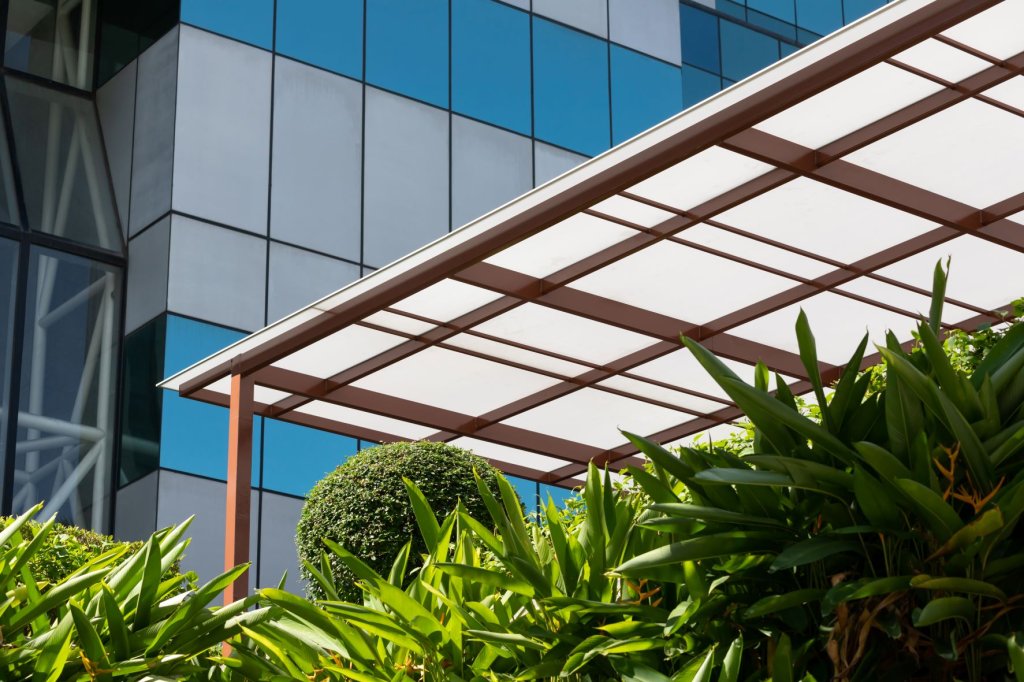Toughest Plastic Sheet
A material’s impact resistance can vary depending on several circumstances, including operational temperature, outdoor exposure, and UV rays. Design can also be a significant factor in how well a plastic withstands impact damage. For example, sharp interior corners can lead to stress points that lead to breakage, whereas round corners hold up better.
A part’s service life can be improved, and future part failure can be avoided by making the proper material selection upfront. Here are some of the top options for impact-resistant plastic sheet for producing quality, durable parts.
1) PC (Polycarbonate)
PC (polycarbonate) is a notably durable plastic that can come in a transparent form with a clarity comparable to glass. Because of this and the ease with which it can be manufactured, PC is frequently used in place of glass where excellent impact resistance is required. In addition, polycarbonate is used to manufacture various applications, such as windows, roofing, signage, helmets, greenhouses, face shields, safety goggles, and food shields.
Despite its high impact resistance, PC can be prone to scratches, and its cost can be more than other plastics—both of which can be factors when determining if it’s the best material for specific projects.
2) HDPE (High-Density Polyethylene)
HDPE (high-density polyethylene) is a tough, adaptable thermoplastic with excellent impact and tensile strength. Due to the proximity of its molecules, HDPE is incredibly stiff and strong. Additionally, HDPE is immune to corrosive substances, solvents, absorption, and abrasion. However, HDPE can only withstand low to moderate heat resistance.
HDPE is an inexpensive and simple-to-manufacture polymer. Chemical tanks, marine construction, containers, outdoor furniture like playgrounds and tables, and even prosthetics contain it. However, despite its durability, HDPE is prone to stress cracking when placed under intense pressure.
3) ABS (Acrylonitrile Butadiene Styrene)
Various industries prefer to use ABS (acrylonitrile butadiene styrene) because of its great impact resistance and reasonable price. Additionally, ABS is simple to process and bonds well to coatings, paint, and adhesives. Its ultimate qualities are influenced by the temperature at which it is produced; low temperatures result in better impact resistance, whereas high temperatures increase heat resistance.
Numerous products, such as instrument panels, luggage, automobile components, housings for power tools and other appliances, and children’s toys, are made of ABS. Although it is a very versatile material, it is not recommended for use in many food and beverage applications.
4) HIPS (High Impact Polystyrene)
Two primary features of HIPS (high-impact polystyrene) are superior impact and fatigue resistance. In addition, HIPS is light enough to be easily fabricated and rigid enough to resist bending. This strong and dependable material enables parts to withstand fractures brought on by repeated use.
HIPS are commonly found in electronics, consumer goods, machinery, gas tanks, and many other industrial applications. However, with its strength and food safety qualities, HIPS can also make food storage components, including the interior lining of refrigerators and hot coffee cups.
Unfortunately, HIPS is not very eco-friendly because it is expensive to recycle and takes a long time to break down. Additionally, it can be very flammable and poorly resistant to organic solvents.
5) pDCPD (Polydicyclopentadiene)
pDCPD (polydicyclopentadiene) is utilized in countless applications that call for big, powerful, and visually appealing parts and is ideal for harsh and demanding situations.
Part size and weight are essentially unrestricted with pDCPD’s design flexibility. It has properties similar to pricey designed thermoplastics yet has the molding flexibility of a thermoset.
Among the extraordinary physical characteristics of the substance are high tensile and impact strength, superior corrosion resistance, high heat distortion temperature, and good flexibility. Its only negative characteristic is that it’s not recyclable.
pDCPD is often found in automotive body panels, construction equipment, waste containers, military equipment, and valves.
6) Polyamide-imide (PAI)
PAI (polyamide-imide) is a plastic that is exceptionally durable, strong, and stiff. Because PAI has minimal thermal expansion, strong electrical grade insulation, and superior chemical resistance, it maintains its dimensional stability even when subjected to high temperatures. However, PAI may stretch and compress to adapt to harsh impacts due to its tensile and compressive strengths.
PAI’s versatility is further increased by its resistance to various standard fuels, acids, and solvents. Bearings and bushings, pump and valve components, semiconductor equipment, and other electrical connectors are a few products frequently made using PAI.
Although it can be found in various manufacturing processes, PAI can be pricey, challenging to work with, and only effective at high temperatures. Additionally, PAI has a low hydrolysis resistance, which means that while it is dimensionally stable under high-impact conditions, it expands when exposed to water.
Choosing the Best Impact-Resistant Plastic for You
The performance and longevity of your next project can benefit significantly by selecting the best impact-resistant plastic. With the proper selection, your components can endure the test of time and handle a great deal of physical stress.
The plastics listed above offer chemical resistance, manufacturability, dimensional stability, and compatibility with both natural and synthetic substances, in addition to toughness and high impact resistance.
Piedmont Plastics carries a full range of impact-resistant polymer products for every manufacturing need. Contact us, and we’ll put you in touch with our experts, who can help you find the best materials for your project from our nationwide network of over 50 locations.
